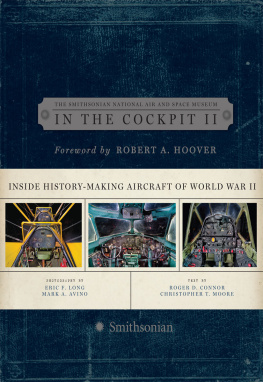FLYING THE SR-71 BLACKBIRD
I N T HE C OCKPIT O N A S ECRET
O PERATIONAL M ISSION
C OL . R ICHARD H G RAHAM , USAF ( RET .)

First published in 2008 by Zenith Press, an imprint of MBI Publishing Company, 400 First Avenue North, Suite 300, Minneapolis, MN 55401 USA.
Copyright 2008, 2010 by Richard H. Graham Hardcover edition published in 2008. Digital edition 2010.
All rights reserved. With the exception of quoting brief passages for the purposes of review, no part of this publication may be reproduced without prior written permission from the Publisher.
Zenith Press titles are also available at discounts in bulk quantity for industrial or sales-promotional use. For details write to Special Sales Manager at MBI Publishing Company, 400 First Avenue North, Suite 300, Minneapolis, MN 55401 USA.
To find out more about our books, join us online at www.zenithpress.com .
Digitial edition: 978-1-61060-070-5
Hardcover edition: 978-0-7603-3239-9
Designer: Chris Fayers
Library of Congress Cataloging-in-Publication Data
Graham, Richard H., 1942
Flying the SR-71 Blackbird : in the cockpit on a secret operational mission / by Richard H. Graham.
p. cm.
ISBN-13: 978-0-7603-3239-9 (hbk.)
ISBN-10: 0-7603-3239-8 (hbk.)
1. SR-71 Blackbird (Jet reconnaissance plane) I. Title.
UG1242.R4G725 2008
358.4583dc22
2007011531
Printed in the United States of America
To the men and women of the entire Blackbird community.
C ONTENTS
F OREWORD
It is with great pleasure that I write this foreword to my close friend Richard Grahams latest book, Flying the SR-71 Blackbird: In the Cockpit on a Secret Operational Mission. Describing his personal insights into piloting the SR-71, he provides the missing link among the many Blackbird volumes that have been written over the past quarter century. While many nuts-and-bolts references have been written covering the aircrafts development, flight test, and operational history in minute detail, none, until now, have addressed the subject of flying the mission from the perspective of the pilot.
The Lockheed SR-71and its A-12, F-12, and M-21 predecessorsis arguably the most significant aircraft of our time. Born under the auspices of Cold War secrecy and operated in clandestine fashion for nearly three decades, the Blackbird family (as these aircraft became known to the aerospace press) would somewhat reluctantly become an international symbol for all that is good and progressive and vital in the free world. Though produced in relatively tiny numbers and used sparingly, the impact the Blackbirds had on the international communityand in turn, the latters impact on global politicslooms large in world history.
As these words are written, no known piloted aircraft has yet to supersede the SR -71s extraordinary speed and altitude capabilities. Accordingly, it is very possible that this near-monumental performance legacy will remain on the record books, unchallenged, forever. And yes, Im well aware that forever is a very long time.
Fortunately, no one is more suitable to write this book than Richard Graham. Both a true gentleman and a legitimate scholar, Rich (as he prefers to be called) is well known for his earlierand, I might add, exceptionalworks describing piloting the SR-71 and its use in operational U.S. Air Force service. This latest volume continues this legacy, taking the reader through virtually every aspect of an operational SR-71 flight, from mission assignment and preflight through J58 spool-down following landing. It is a terrifically exciting journey, written by someone who has literally been there and done that.
For those of us who will never have the opportunity to sit in the cockpit of the worlds most alluring aircraft, this book represents the next best thing. If you have a pilots soul, a need to read, and youve never been able to get enough SR-71 to satiate your hunger, you hold in your hands the remedy youve been waiting for. My hat is off to Rich for creating another fine and very authoritative read for those of us who can only dream of cruising at Mach 3.2 and eighty thousand feet!
Jay Miller, aviation historian
P REFACE
The term Blackbirds includes the entire family of A-12, YF-12, and SR-71 aircraft. Those three aircraft were the basic varieties built by the famed Lockheed Skunk Works. The F-12 and M-21 aircraft were variants of the basic A-12 aircraft. The first flight by a Blackbirdan A-12occurred on 26 April 1962, flown by Lockheed test pilot Lou Schalk. It was a single-seat Blackbird flown by Central Intelligence Agency (CIA) civilian pilots under the developmental program codename Oxcart. They flew sorties out of Okinawa, Japan, under the operational codename Black Shield. From May 1967 until the program was officially terminated in May 1968, they flew twenty-nine sortiestwenty-six over North Vietnam and three over North Korea.
The SR-71s first flight, on 22 December 1964, was flown by Lockheed test pilot Bob Gilliland. After a year of flight testing, the SR-71B, the trainer model, was the first aircraft of the family delivered to Beale Air Force Base (AFB) in California on 6 January 1966. Four months later, a steady stream of SR-71s was delivered to Beale, and training began at a rapid pace. Two years later, on 8 March 1968, Majors Buddy Brown and Dave Jensen departed Beale in SR-71 No. 978 on the first Senior Crown operational deployment to Kadena Air Base in Okinawa, Japan. Two more SR-71s followed.
On 21 March 1968, Major Jerry OMalley and Captain Ed Payne flew the first SR-71 operational sortie out of Okinawa over North Vietnam. From then until November 1989, when the Air Force officially terminated all operational flying of the Blackbirds, these aircraft flew a total of 3,551 operational sorties. During those twenty-one years, new procedures were continually being developed to make each SR-71 flight safer and the plane more viable as a national reconnaissance asset. Failure was not an alternative.
This book is based on a typical operational mission flown during my time as an SR-71 pilot from 1974 to 1981. Although minor differences in procedures took place between flying out of Okinawa and Royal Air Force (RAF) Mildenhall, England, the basic SR-71 operational mission profile remained the same. Having talked at great length with crew members that flew the Blackbirds operationally before and after me, I ascertained that only minor procedural differences existed.
This books focus is on the operational aspects of flying an SR-71 reconnaissance sortie. It does not attempt to detail the thousands of man hours spent by highly dedicated and experienced maintenance, intelligence, supply, logistics, tanker operations, and the myriad of other support personnel necessary to make just one SR-71 sortie happen. SR-71 crews were the first to admit that flying the plane was the glamorous and easy part; preparing a Blackbird for flight and processing the intelligence afterward was the hard part.
One of the best ways to learn about all the fascinating and unique aspects of the SR-71 is to go through the checklist, step by step, just like crews did for every flight. In doing so, I will explain the function of every dial, switch, and gauge in the cockpit so the reader understands what made the Blackbirds tick. In some cases, I will defer an explanation to a later portion of the book where it makes more sense. To better understand some of the more complicated systems on the aircraft, I will refer the reader to various charts and graphs for a visual representation. Pictures speak louder than words.


















